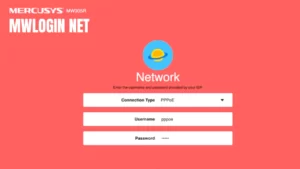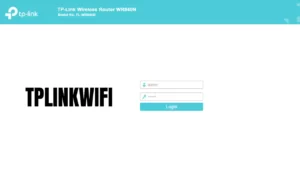Destination host unreachable error indicates the device is using an incorrect IP address. The ping packet identifies the default gateway when you ping an IP address from the computer. After that, the default gateway sends the ping packages to the destination address. But, if the default gateway fails to connect to the network, the PC displays this error message.
Besides, you can experience this ping issue due to misconfiguration. Change the computer and the network settings to resolve this error immediately. Sometimes, you can encounter this error when the ISP doesn’t provide the router with an IP address.
It could be because of entering an incorrect DNS address of the router. Moreover, a faulty power or ethernet cable can be the reason behind such an occurrence. Replace these units to resolve the destination host’s unreachable error.
Reasons behind the Destination Host Unreachable Error
There are a plethora of reasons why the host becomes unreachable. Even after connecting to the network, the device fails to access the gateway IP when the firewall is on. Disable the Windows Defender Firewall to get rid of this unwanted ping error. When the computer or router is off, the destination host unreachable error occurs.
Check the power connection of the router and the PC immediately. If there is wear and tear in the power cables, replace them. Besides, the remote gateway might not get the ping requests for spoofing. Sometimes, antivirus software can block incoming requests. Uninstall these problematic applications to eliminate this error.
Destination Host Unreachable but no Packet Loss — What does it Indicate?
Most computer users tend to confuse ping with packet loss. Though these two are interconnected, they work in different ways. Ping verifies the reachability of the connected devices (hosts). Whereas, the packet loss checks the percentage of packers that didn’t make it to the destination.
Usually, when this network error occurs, the device shows 100% packet loss. But, this might not happen all the time. Sometimes, there might be 0% packet loss when the ping destination is unreachable. Usually, it occurs when there is no router in the computer. This prevents the packets from being sent on the route and leads to no packet loss.
Destination Host Unreachable — 3 Easy Solutions
Destination Host Unreachable shows two different error messages. Did you get the “Reply from x.x.x.x Destination host unreachable error? Well, it implies something is wrong with the remote router.
A malfunctioning router can cancel the ping requests. Replace the wireless router to get uninterrupted internet access. But, if that doesn’t work, follow these solutions to fix this completed ping error:
1. Clear the ARP Cache
A router’s ARP table connects the Mac address to the IP address. This networking table stores cache when the router connects to any devices. And, these entities can prevent the device from detecting the IP addresses. Remove the ARP cache from the computer to solve this ping error.
Hold the Windows and R keys together and write “cmd” when the Run box opens. Additionally, you can choose “Command Prompt” from the Settings menu. Open it as an administrator and write “netsh interface ip delete arpcache”. Press the “Enter” key and try ping the same IP address without further issues.
2. Run the Traceroute Command Line
Traceroute displays the path details that a packet takes from the destination. The traceroute command is available for the old and latest Windows device users. Running this command isn’t that difficult. Open the Start menu, go to the search box and write “cmd”.
Choose the Command Prompt tool and when the new window opens, write “tracert x.x.x.x”. (Here, “x.x.x.x.” denotes the assigned IP address of the wireless router.)
Press the “Enter” key to know why the Destination host unreachable message. But, this tool won’t show the device where the issue occurred for providing incorrect gateway IP. Thus, check the router’s private IP address once to overcome the problem.
3. Assign the Correct Gateway Address
Adding the correct IP address to the destination host will fix the problem. But, before that, you should find out the wireless router’s default IP address and type. Many routers have both IPv4 and IPv6 support. But, there are dual-band routers that use only IPv4 IP addresses.
Don’t know which IP address the router uses? Here’s how to do that:
First, right-click on the network name and choose “Open Network and Sharing Center”. When the next window opens, move to “Connections” and click “Ethernet”. But, if the router and the computer aren’t connected via an ethernet cable, choose “Wi-Fi”.
Select “Details” when the network status window appears. Scroll down to the page to locate the “IPv4 DNS Server” section. It is the wireless router’s default IP address. Now, go to the IPv6 DNS Server section and check what is written there. If you don’t see any IP address, this means the router doesn’t provide an IPv6 connection.
How to Change the Default Gateway?
Hold the Windows and I keys together to open “Settings” and choose “Network & Internet”. After that, tap on the “Network Connections” option and find the LAN. Right-click on the correct LAN name and choose “Properties” afterwards. When the LAN Settings window opens, go to the “Networking” tab. Navigate to “Internet Protocol Version 4” and tick the checkbox.
Now, choose the “Internet Protocol Version (TCP/IPv6)” option if the router has an IPv6 feature. Go to the “Properties” tab, locate “Default Gateway”, and write the correct IP address. Press the Enter button or click “OK” after completing this router configuration. Open the Command Prompt tool and write “ping www.google.com -t”. Press Enter to prevent getting this error while getting the ping results.
How to know the Ping Issue is Resolved?
There are several ways to know whether you have resolved this error or not. Open the Command Prompt tool, write ‘netsh interface ipv6>exit”, and press “Enter”. Now, write ping – 6 x.x.x.x to send the ping request to the computer.
Is the device showing the “ping request might not find the host x.x.x.x” error message? This indicates you have entered an incorrect router IP address. Enter the proper default gateway IP to restore the Wi-Fi connection.







